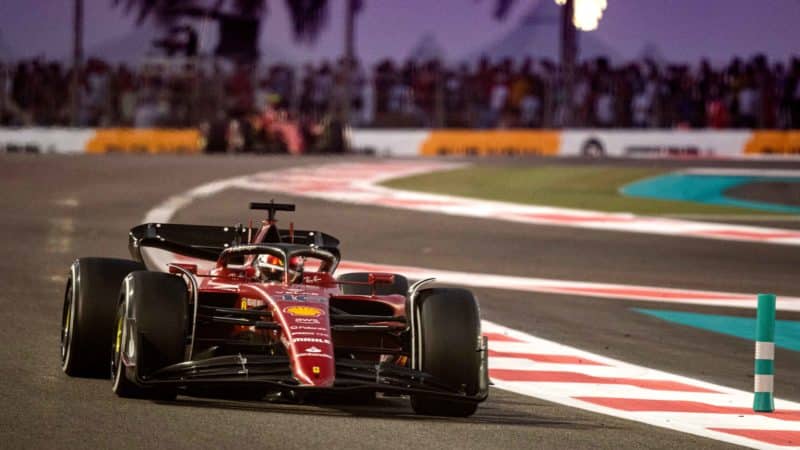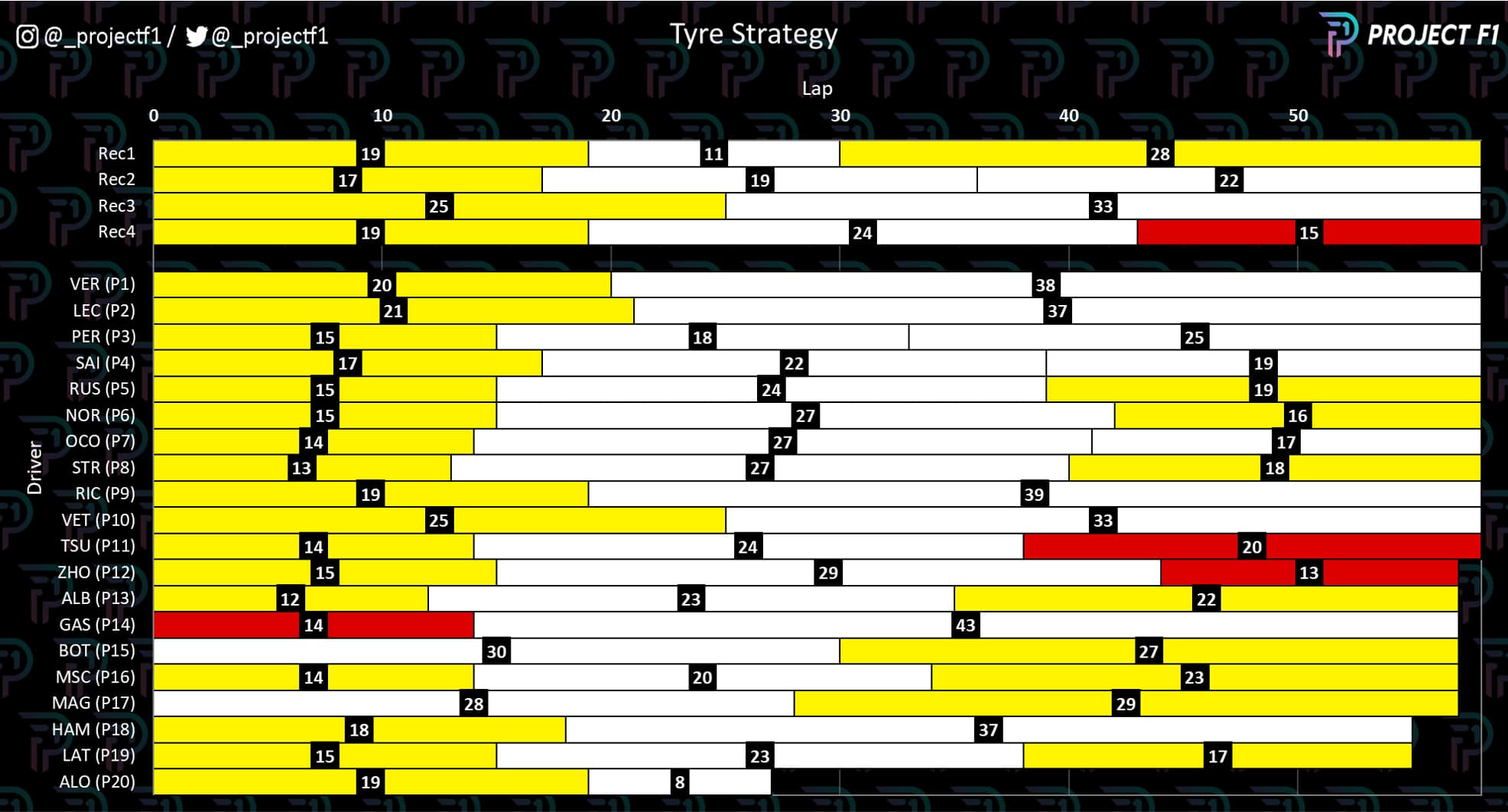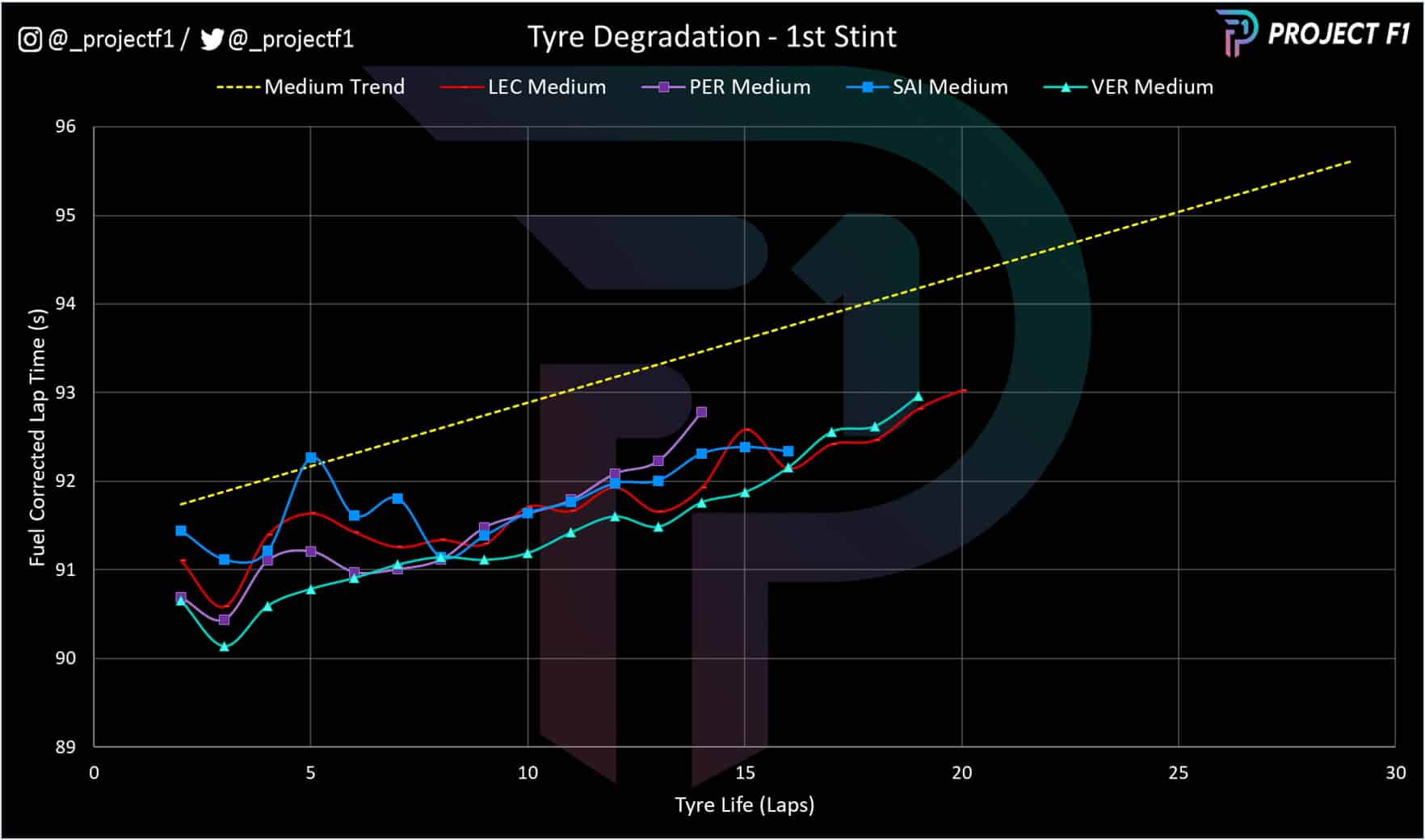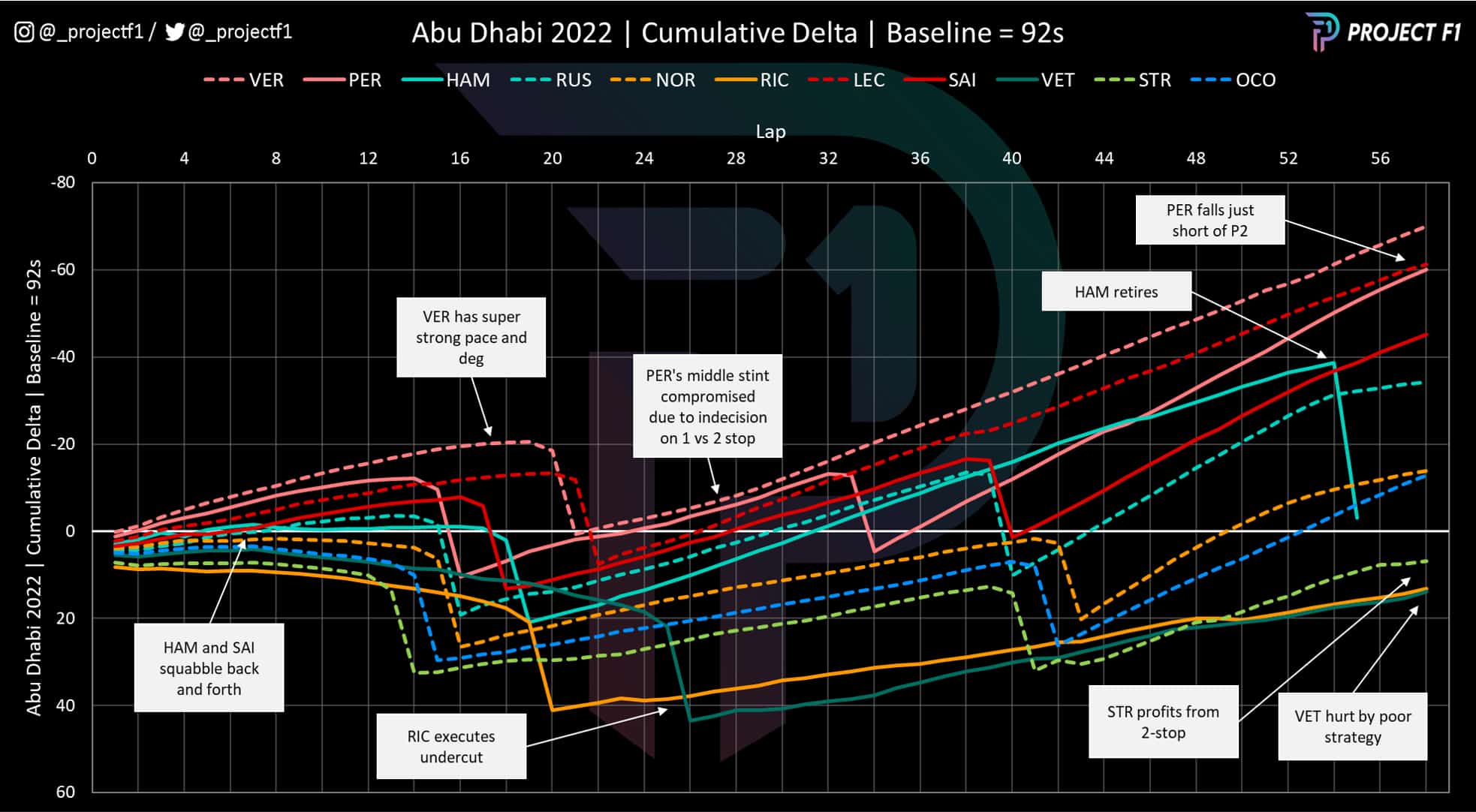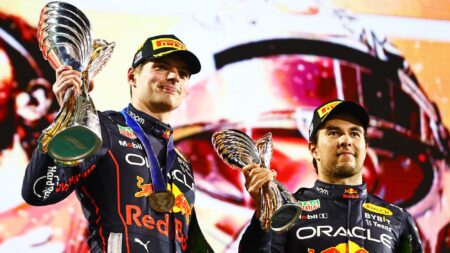The gap is noticeably bigger when Leclerc emerges. However, there’s not much space between Perez and Verstappen, shown by the dotted pink line, once the world champion has pitted. Verstappen remains ahead and Perez doesn’t have clean air any more. At this point, Red Bull is clear that Verstappen is on a one-stop strategy, but less certain of Perez’s route to the flag.
Comparing Perez’s first stint length against the recommended strategies from Pirelli would lead you to believe that Perez was headed for a two-stop.
If that was the case then it would have been sensible to have him take the lead of the race and set lap times in clean air while Verstappen focused on tyre management. Perez’s trace tracks that of Verstappen in Chart 3, suggesting he was being held up. Allowing him past would have given Perez the best set-up to make up enough time to compensate for the time cost of making a second stop.
However, a one-stop race was still a possibility for Perez. it’s thought that Red Bull were reluctant to orchestrate a position swap, which could have resulted in Verstappen losing the race to Perez if neither car pitted again.
So Perez held station. Perhaps this would have been inconsequential had Perez not pitted so much earlier than his teammate or Leclerc. But the tyre offset was enough for Leclerc to close the gap to Perez by lap 32 as shown in Chart 3.
By this point Red Bull was forced to shift to a two-stop, as committing to the one-stop would only risk Perez falling back further, potentially losing position to Sainz (if the Ferrari driver also went for a miraculous one-stop).
It was also given encouragement by a radio call to Leclerc — later revealed to be a dummy — that suggested Ferrari was looking to pit its driver and pass Perez using the undercut.
Switching to the two-stop gave Perez the option to attack Leclerc and potentially invited a situation where Leclerc failed to avoid the tyre cliff due to the long second stint.
Perez puts the hammer down
Chart 4 Trend race pace comparison
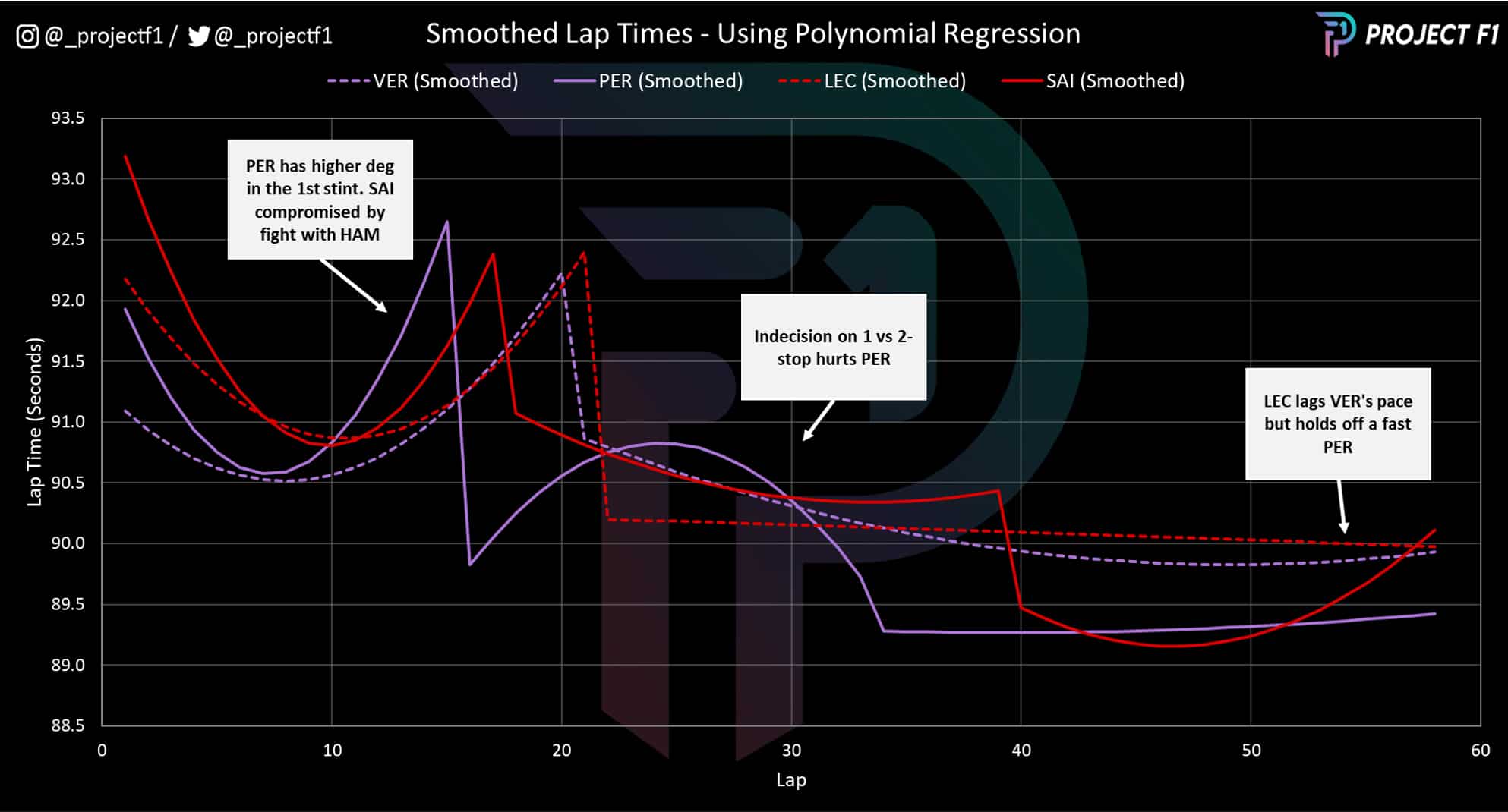
With a new set of tyres, Perez moved to the offensive, as shown in the dramatic pace differential to Leclerc shown in Chart 4 above. It charts smoothed lap times to reduce the effect of anomalies.
Perez was lapping at least 0.5sec a lap faster than Leclerc for the remainder of the final stint, which is a big difference compared to the earlier part of the race, where Perez was only faster than Leclerc from the start of the race to lap 10 and from laps 16 to 22.
Much of this is a consequence of the indecision of committing to the two-stop strategy. The poor degradation and resultant short first stint on the medium tyre, especially compared to peers should have been an invitation to go hard on the second stint. But the desire to avoid the extra stop ultimately left Red Bull between an Italian rock and a hard place.
While Perez’s pace was impressive, he fell just shy of challenging Leclerc by the end of the race, as shown in Chart 3.
Allowing for the benefit of fuel burn, Perez’s pace on the 3rd stint is somewhat of a representation of the potential pace he could have unlocked in the second stint, had Red Bull committed early for the 2-stop, reducing the need for tyre conservation.
The hare and the tortoise
Chart 5 Overall race pace compared
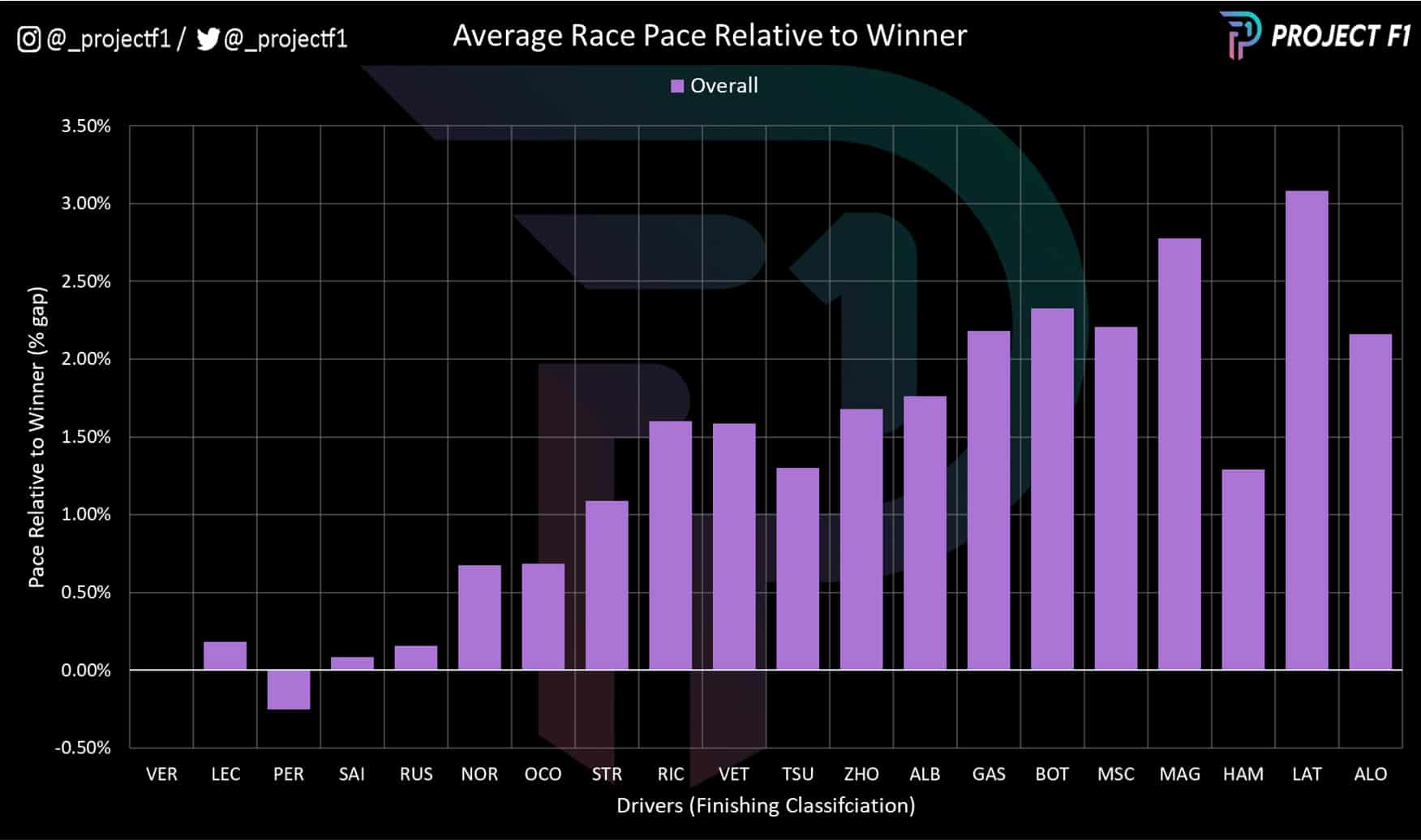
Not convinced? Well, Chart 5 provides a powerful summation. Perez had sensational pace across the entirety of the race, especially relative to Leclerc. But the advantage wasn’t enough to offset the impact of the additional stop.
This race serves as another example of how having the fastest car simply isn’t enough if your team doesn’t get the strategy right.
It’s an area where Red Bull has excelled in 2022, but Leclerc and Ferrari had the better combination of factors in Abu Dhabi, and did well to take out P2 in the driver’s championship.
Project F1 turns data into graphics that uncover race pace and strategy
See more analysis at @_ProjectF1 on Twitter or @_ProjectF1 on Instagram
